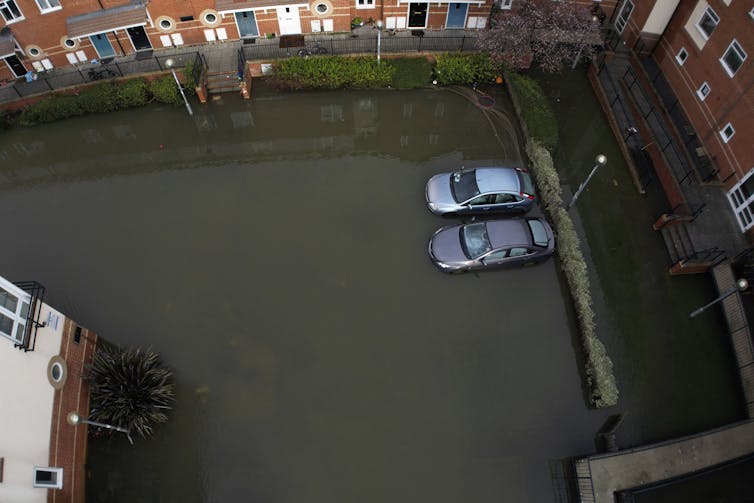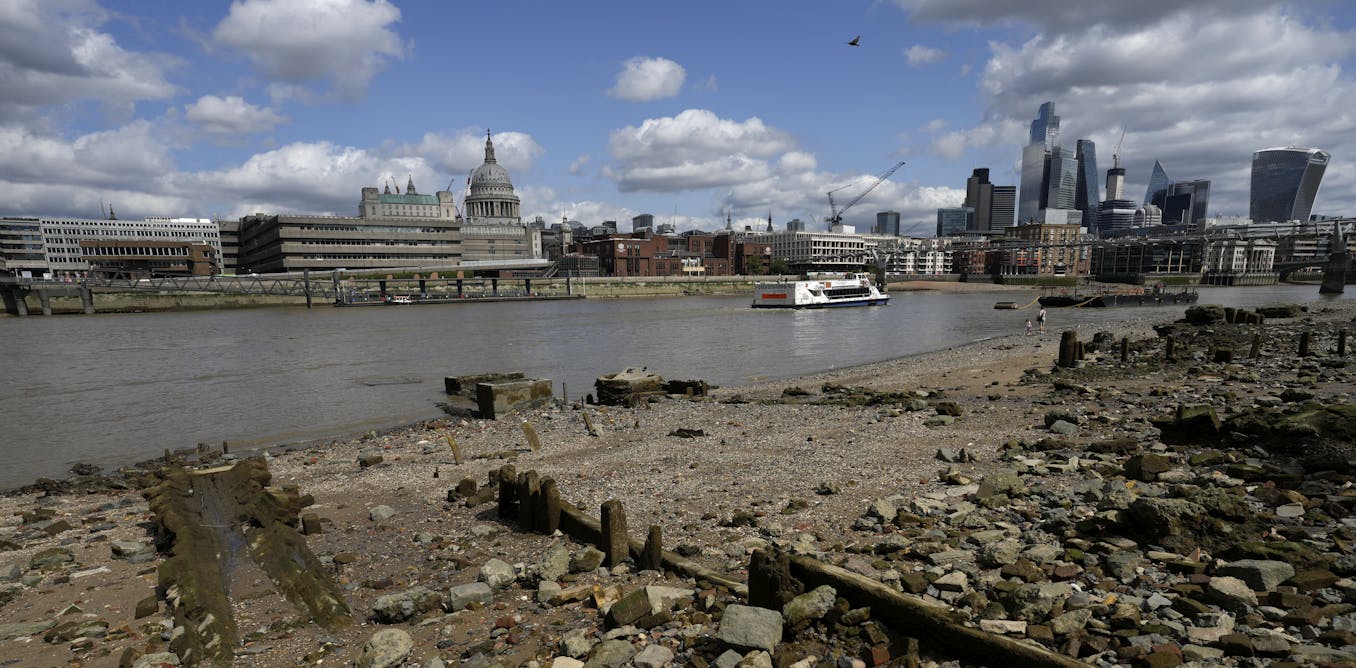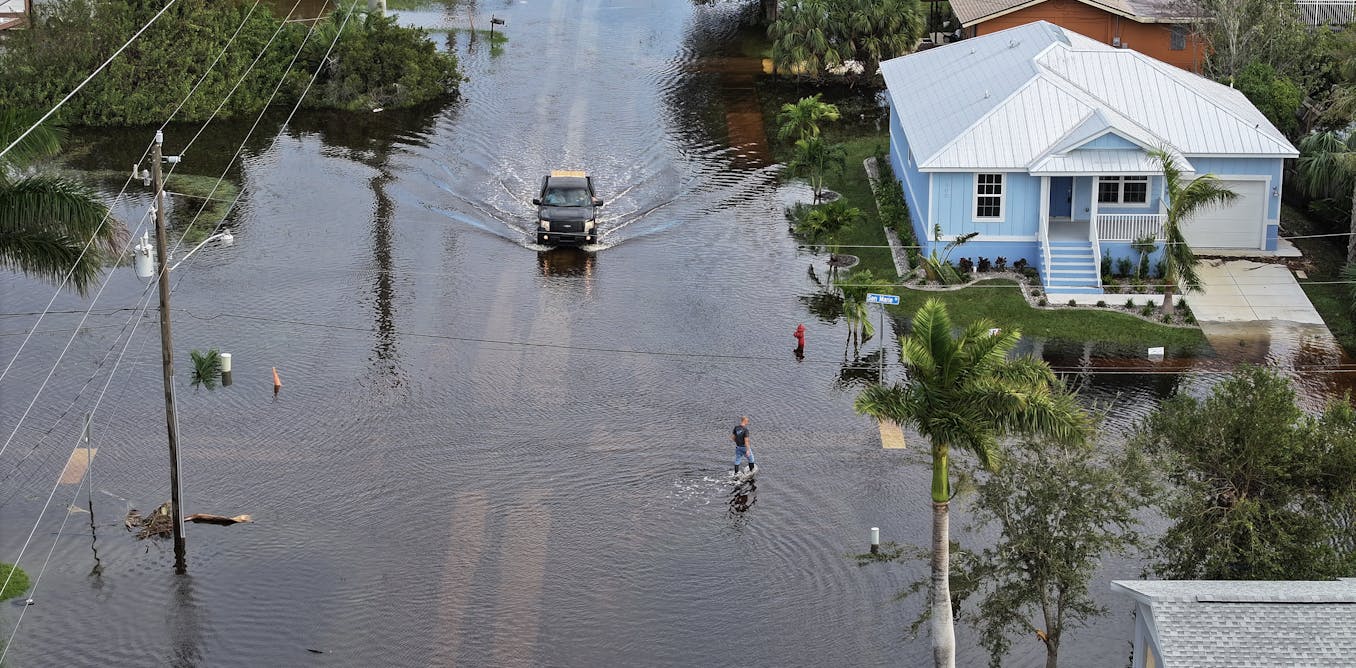Unprecedented storms and devastating drought. Flash floods and wildfires ignited by the air’s dry heat. This is the experience for many in our modern world. But it was also the experience for those living amid England’s Little Ice Age.
The Little Ice Age is a period from around 1300 to 1850, when global temperatures dropped significantly. While the exact cause of this phenonemon is unknown, theories range from volcanic eruptions to European colonization of the Americas.
Our research into England’s Little Ice Age during the 16th and 17th centuries has unearthed more than 1,800 unique pieces of weather observations, hidden in documents like diaries and letters. Local and national chronicles embedded reports of extreme weather among accounts of war and monarchs. Extreme weather pamphlets publicized tragic effects of earthquakes, floods and storms, much like our media today.
Our team has created an open access database called the Weather Extremes in England’s Little Ice Age 1500-1700. This database visually maps both extreme and temperate weather in the age of Shakespeare and can help to advance modern climate science.
More fundamentally, these experiential accounts provide a fascinating window into a world not too different from our own. While the causes of the climate change of today are well known, and likely different from that of the Little Ice Age, the experiences of living through both events are at times eerily similar. Understanding these past experiences can help us to better understand our present day and to develop more robust policies in the here and now.
Read more:
The Canadian Arctic shows how understanding the effects of climate change requires long-term vision
Frosts and freezes
Frost fairs on the River Thames have become a familiar cultural reference point for England’s Little Ice Age. Our data shows that the river froze over a mere four times in the 16th century — in 1516, 1537, 1564 and 1590 — and there were only intermittent observations of unusual cold or snow.
The 17th century was markedly different. Reports of cold came thick and fast, with the exception of a few years between 1620 and 1643.
(Houghton Library, Harvard University)
This was the century of frost fairs on the Thames. With the first 17th century fair in 1608, these events were celebrated by English playwright Thomas Dekker in his pamphlet The Great Frost.
Drinking, barbering and games were on display as London’s citizens marvelled at the novelty of entertainment on the ice. The freezes were frequent enough to become an institution.
By the winter of 1683-1684, the frost fair had become a city within a city, expanding across the ice with avenues of booths, bear and bull-baiting rings and boats-turned-chariots pulled by enterprising watermen across the now solid river.
But these iconic events were just one aspect of Little Ice Age weather in England.
Storms and floods
In the 16th century, severe rain storms were far more common than cold snaps.
On Oct. 5, 1570, “a terrible tempest of wind and raine” caused flooding from Lincolnshire to London as rivers overflowed their banks, drowning towns, fields, crops and cattle. Storm surges inundated the coastline.
Four years later, towns from Newport to St. Ives suffered “raging floods,” and a “giant sea fish” (whale) washed up in the Thames from a massive surge up river. In May 1594, “soddane showres of haile [and] raine” destroyed houses, iron mills, crops and cattle in Sussex and Surrey. September of that year saw another deluge, with bridges taken down in Cambridge and Ware.
This all changed in the 17th century, following the Great Flood that struck Bristol and surrounding areas in 1607. Extreme cold spells then became more frequent, and major storm events were less common. The winter of 1612-1613 saw a number of violent storms recorded in the pamphlet Wonders of this Windie Winter, with livestock lost from Newcastle to Dover and bodies from shipwrecks washing aground in the Thames.
In the next 40 years, though, only the years of 1626 and 1637 contain reports of significant storm events causing loss of life or livestock. Instead of extreme storms, this century was marked more by regular but moderate rainfall, consistent with colder, wetter conditions normally associated with the Little Ice Age.

(AP Photo/Frank Augstein)
Fire and heat
If colder, wetter weather was a new normal for 17th century Britons, the hot, dry spring of 1666 caught Londoners unprepared. The Great Fire of London was one of the worst disasters of the age, and diarist John Evelyn recounts that “the heate … had even ignited the aire,” a comment reminiscent of descriptions of wildfire spread today.
Yet periods of extreme heat were surprisingly frequent during the previous century, especially in the England that Shakespeare knew. More than a dozen droughts were recorded across England in the 16th century, usually broken by extreme storms or floods. It never rained, it seems, but it poured. The Thames dried up completely in 1592.
As Thomas Short wrote in his Chronological History of English Weather, “an excessive drought, great death of cattle from want of water; springs and brooks were dried up; horsemen could ride the Thames.” Locals went into the mud to retrieve items long lost to the river.
Shakespeare’s hometown of Stratford-upon-Avon was nearly destroyed by fire twice, in 1594 and 1595, due to severe drought and heat. The warning signs were there for Londoners to beware of hot spells in the next century, but frost fairs and wet weather may have bred complacency.
Lessons for today
The Weather Extremes in England’s Little Ice Age 1500-1700 database is revealing a picture of the world of Shakespeare and early modern England that upends a simplified picture of the Little Ice Age. More than just a world of frosts and freezes, the English Little Ice Age could be known as well as an age of fire and rain.
Read more:
The B.C. election could decide the future of the province’s species at risk laws
The documents in our database are the reports of people who lived in a climatically changing world and saw its shifts firsthand. It shows how important weather crowd-sourcing can be, even centuries later. Contemporary projects like the Community Collaborative Rain, Hail and Snow Network, or the Northern Tornadoes Project, continue in the spirit of this work.
But our data could also provide insight into today’s extreme weather. Historical flooding patterns might provide reference points to better manage and understand the unstable weather experienced in the British Isles today.

The post “New insights from Shakespeare’s England reveal striking parallels to contemporary climate change” by Madeline Bassnett, Professor of Early Modern English Literature, Western University was published on 10/29/2024 by theconversation.com






































Leave a Reply